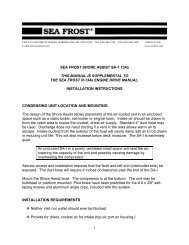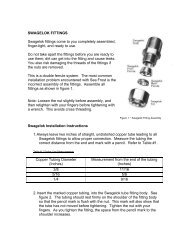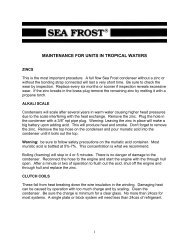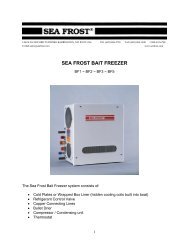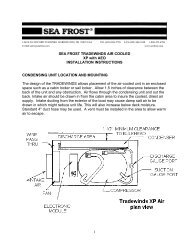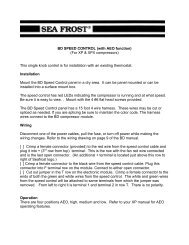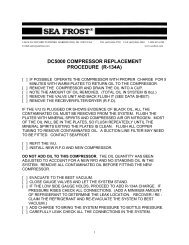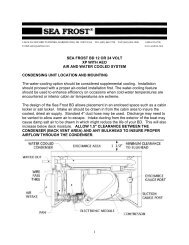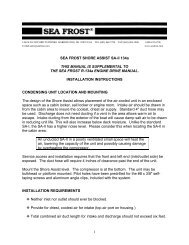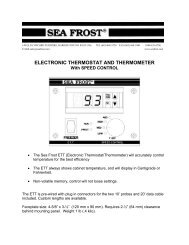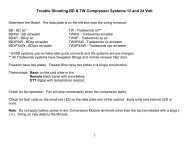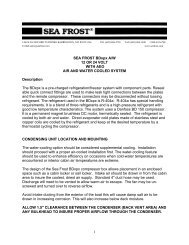SA 3 134a - Sea Frost Refrigeration
SA 3 134a - Sea Frost Refrigeration
SA 3 134a - Sea Frost Refrigeration
You also want an ePaper? Increase the reach of your titles
YUMPU automatically turns print PDFs into web optimized ePapers that Google loves.
IF A LEAK IS DETECTEDTry tightening the fitting nut slightly. (See Swagelok fitting instructions.) If the leak isnot stopped, it is possible that the fitting was incorrectly assembled. Discharge therefrigerant, and then disassemble the connection for inspection. After reassembly,proceed with a leak check.SPECIAL NOTES• Be aware that propellants and solvents in sprays and foams may upset electronicdetectors.• To confirm a leak detected with a detector use bubbles and be sure it is a leakand not some erroneous vapor that is upsetting the machine.• Electronic detectors do not function below 40.F.• A good leak detector is able to pick up leaks as low as 1/2 oz per year.FINAL CHARGINGThis procedure must follow "Evacuation Leak Test" and "Introducing Initial Charge".1. With the refrigerant supply still attached to the suction service port from theprevious procedure, open the can tap valve (or appropriate gauge wheel).2. While closely observing the sight glass in the RFD, start the compressor byswitching on the circuit breaker and then turning on the thermostat.3. The sight glass will show a stream of foam indicating a partial charge. When asufficient amount of refrigerant has been added to the system (A new systemolds 12 oz.) the sight glass will clear, indicating sufficient charge. See READINGTHE SIGHT GLASS. The compressor (Thermostat) should be turned off whilechanging cans.When charging a hot system, (cabinet and plates over 80 degrees F) the sight glass willusually clear as the return line at the Valve Unit becomes frosted).4. When the sight glass runs clear, top off with approximately 4 oz. (1/4 of can)Remember maximum charge is 12oz.5. When observation and test operation have been completed, disconnect thegauges and replace the service port caps.6. Re-check all connection points for leaks.7. Spray the acrylic coating, or similar rust inhibitor, on all the components andfittings while they are clean and dry.23



